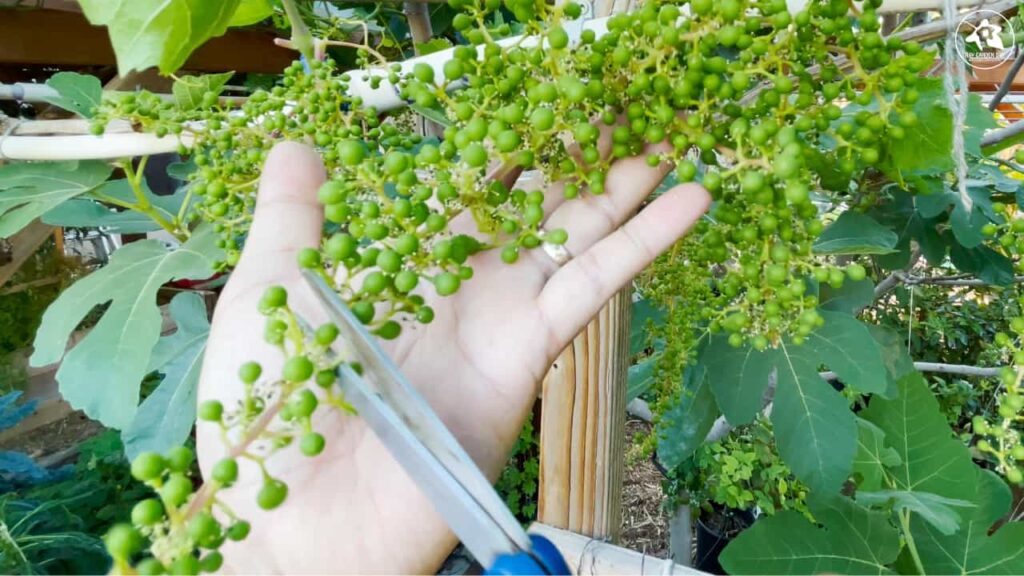Many backyard grape growers thin their grape berries to improve the overall yield. When done correctly, berry thinning can result in larger and more uniform grapes. However, it is essential to thin grape berries at the right time, or you could harm the crop. This blog post will discuss when and how to thin grape berries on clusters but refer to the cluster thinning blog post if you’re interested in the overall cluster thinning and crop load management.
Thinning grape berries can be a delicate process. If done too early, you may harm the developing grapes. On the other hand, you may not see the desired results if done too late.
Grape berrying thinning: when to do it
The best time to thin grape berries is after bloom and fruit set. Removing some berries as soon as possible after the fruitset will help overcome overcropped clusters on shoots with insufficient growth to allow the vine to ripen the remaining crop. Thinning when the berries in a cluster are fully touching (bunch closure) often results in a larger berry size on the remaining crop. Thinning close to ripening by removing green clusters when the berries begin to change colors is used by commercial growers to increase the average ripeness of the remaining crop and improve the uniformity of fruit composition.
How to thin grape berries from a cluster
Thin berries using a clean pair of snips or scissors. Removing the lower one-fourth to one-third of each cluster will produce more spherical clusters with bigger berries. The remaining berries will ripen more evenly with better fruit composition.



Berry thinning will also make bagging the grape clusters much easier to help keep pests from damaging the berries.
No matter how you do it, thinning grape berries is essential in improving your grapevine’s overall yield and fruit quality!
Do you thin your grape berries? Let us know in the comments below!





My mom doesn’t want even ONE baby grape berry to be “lost” or trimmed. So I think I may “sneak” trim one cluster, and then be able to show her the difference. Thanks for your wonderful informative articles.
Thank you for your comment. I’ve learned the hard way losing way too many bunches to monsoon rain (rain and grape don’t mix) and Japanese beetles. Thinning allow us to harvest much earlier before those grape foes arrive. You can experiment by thinning the bunch on a single cane and show your mom the results. Good luck.